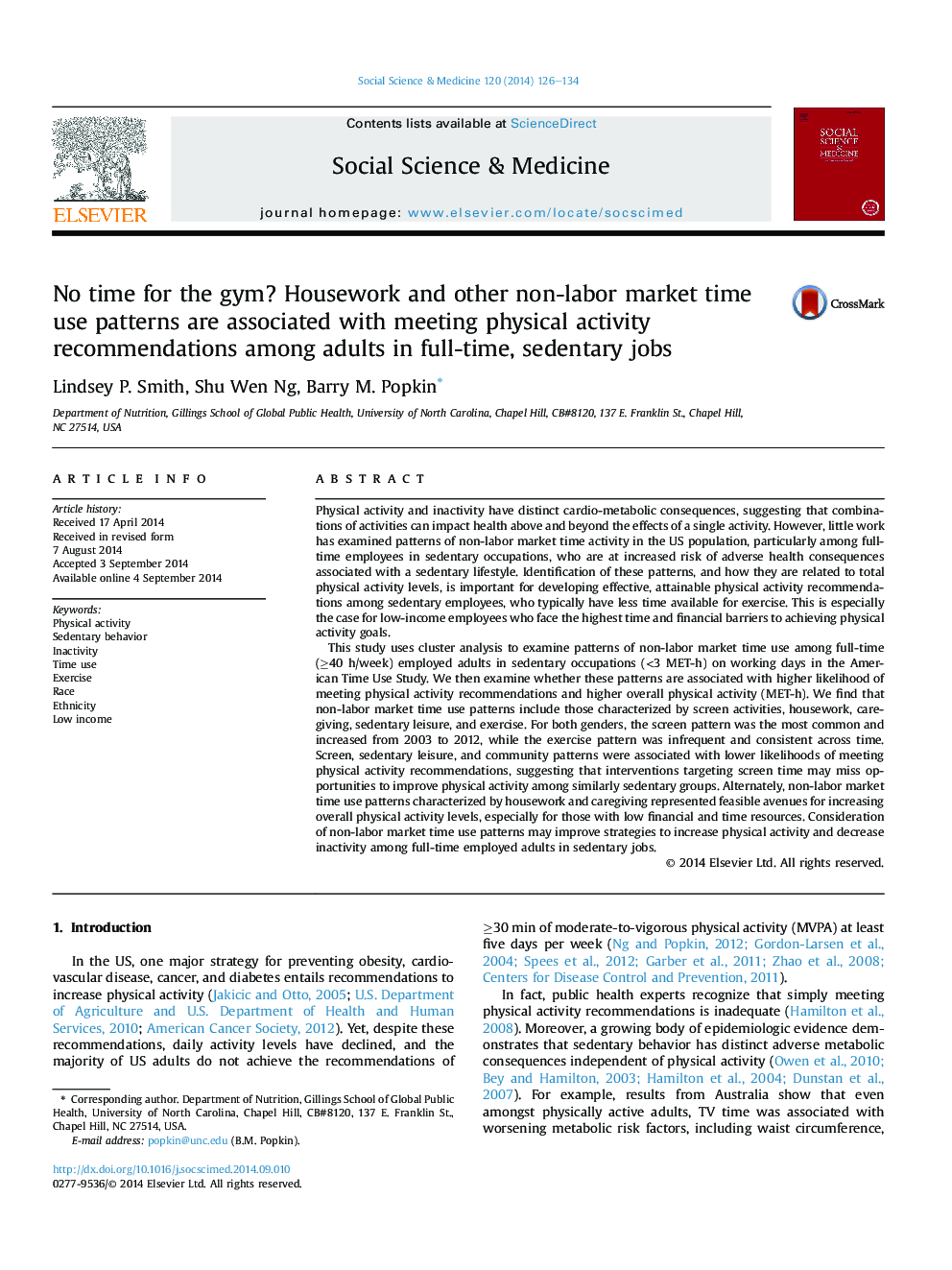| Article ID | Journal | Published Year | Pages | File Type |
|---|---|---|---|---|
| 7334555 | Social Science & Medicine | 2014 | 9 Pages |
Abstract
This study uses cluster analysis to examine patterns of non-labor market time use among full-time (â¥40 h/week) employed adults in sedentary occupations (<3 MET-h) on working days in the American Time Use Study. We then examine whether these patterns are associated with higher likelihood of meeting physical activity recommendations and higher overall physical activity (MET-h). We find that non-labor market time use patterns include those characterized by screen activities, housework, caregiving, sedentary leisure, and exercise. For both genders, the screen pattern was the most common and increased from 2003 to 2012, while the exercise pattern was infrequent and consistent across time. Screen, sedentary leisure, and community patterns were associated with lower likelihoods of meeting physical activity recommendations, suggesting that interventions targeting screen time may miss opportunities to improve physical activity among similarly sedentary groups. Alternately, non-labor market time use patterns characterized by housework and caregiving represented feasible avenues for increasing overall physical activity levels, especially for those with low financial and time resources. Consideration of non-labor market time use patterns may improve strategies to increase physical activity and decrease inactivity among full-time employed adults in sedentary jobs.
Related Topics
Health Sciences
Medicine and Dentistry
Public Health and Health Policy
Authors
Lindsey P. Smith, Shu Wen Ng, Barry M. Popkin,
